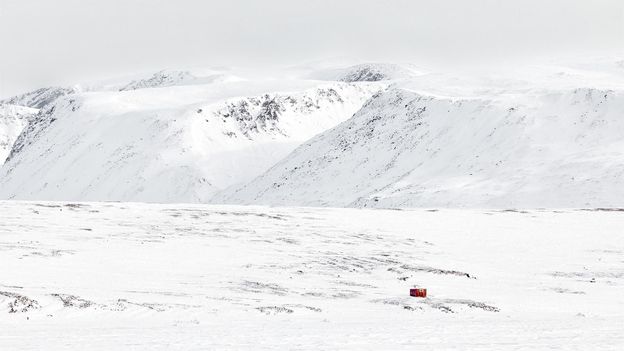 Kevin Corridor
Kevin CorridorFrozen in for 9 months yearly and positioned 800km from the following city, Ittoqqortoormiit, Greenland, gives a captivating glimpse at life on the fringe of the world.
In our ever-connected world, it is uncommon to expertise true remoteness. It is also extraordinary to witness how folks dwell in one of many Earth’s most remoted locations. However earlier this 12 months throughout a once-in-a-lifetime photographic expedition to essentially the most distant inhabited group within the western hemisphere, I used to be in a position to do each this stuff.
Ittoqqortoormiit (pronounced: it-ockor-tormit) is a 370-person village of colourfully painted houses sandwiched between the world’s largest nationwide park to the north and the most important fjord system on the earth to the south. There are not any roads to Ittoqqortoormiit; the one option to get there may be by helicopter, boat (in the summertime), snowmobile or one among two weekly flights to Nerlerit Inaat airport, roughly 40km away: one from Iceland, and the opposite from West Greenland.
Positioned above the Arctic Circle at 70°N and roughly 800km from the closest city, Ittoqqortoormiit’s yard is a frigid, untamed wilderness house to polar bears, musk oxen and thousands and thousands of sea birds who nest on icebergs. Sea ice freezes the village in for 9 months a 12 months, however gives a lifeline to Ittoqqortoormiit’s Inuit inhabitants, who journey it by canine sled to hunt. The village will have fun its centenary in 2025, however lately, its inhabitants has been shrinking (35% since 2006, by some estimates) as younger individuals are more and more migrating to cities to review or pursue completely different careers than the standard Arctic looking of their forefathers. What’s extra, as rising temperatures trigger the encircling sea ice to freeze later and soften earlier, Ittoqqortoormiit finds itself on the entrance strains of local weather change, which is additional threatening the Indigenous group’s tradition.
My winter tour to Ittoqqortoormiit wasn’t simply an journey that took me exterior my consolation zone; it was one of the vital difficult experiences I’ve ever had. After flying from Reykjavík to Nerlerit Inaat, I spent 5 days on the pack ice in temperatures plummeting as little as -40C. I travelled on dogsleds, slept in tents and small hunter huts (with no beds, working water, heating or amenities) and dashed 45km on a snowmobile via a white-out blizzard with 80kmph winds.
In the end, this turned out to be way over a images expedition, because it provided a uncommon glimpse of life in one of the vital distant landscapes on Earth. It additionally revealed how Ittoqqortoormiit’s remaining residents are struggling to adapt their deep-rooted traditions to a quickly altering world.
 Kevin Corridor
Kevin CorridorBaptism by chilly
My journey was organised by the famend photographer Joshua Holko, who organized for 2 native Inuit guides, Åge Danielsen and Manasse Tuko, to whisk myself and two different photographers throughout the ice on their canine sleds from the Nerlerit Inaat airport to Ittoqqortoormiit with the goal of capturing a few of Earth’s most stark, beautiful polar landscapes.
We established camp in small tents near the airport the primary evening as temperatures had been -30C and falling. After sawing frozen cod on the snow, as a carpenter would reduce via timber, and boiling it in a pan of melted ice, Danielsen and Tuko introduced that dinner was prepared. The cod was wonderful, if bony, however we had been extra involved about what lay forward. I had by no means skilled chilly like this earlier than, and as we hunkered down for the evening, robust winds battered the tents whereas the sled canine howled when Arctic foxes and – maybe – polar bears handed. Because the temperature continued dropping, my legs quickly began to cramp. It was actually a baptism by chilly.
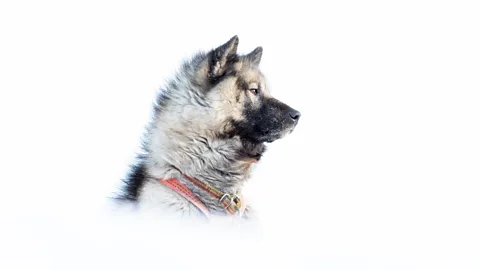 Kevin Corridor
Kevin CorridorNationwide icons
Shortly after breakfast, Danielsen and Tuko began loading our provides. As I watched, they expertly reworked the empty canine sleds into containers on skates crammed with baggage, cooler packing containers, digital camera instances, pet food and extra. They skillfully tied the products on with ropes, demonstrating abilities that they defined had been handed down from father to son.
We sat two to a sled with a information on the entrance driving the canine. For the following six days, 12 Greenland sled canine assigned to every sled carried a great deal of greater than 450kg and ran their hearts out for as much as 25km a day. These beloved animals (referred to as qimmiit in Greenland’s Inuit language, Kalaallisut), that are a big husky-type breed, are believed to have been introduced from Siberia to Greenland some 1,000 years in the past by the Inuit’s direct ancestors, the Thule folks, and are one thing of a nationwide icon in Greenland. Not solely do they signify an essential a part of Inuit tradition and their connection to the land, however as we might quickly discover, additionally they had the benefit of being a lot quieter than snowmobiles, due to this fact bettering our probabilities of photographing wildlife – or, in Danielsen and Tuko’s case, once they weren’t guiding us, looking wildlife.
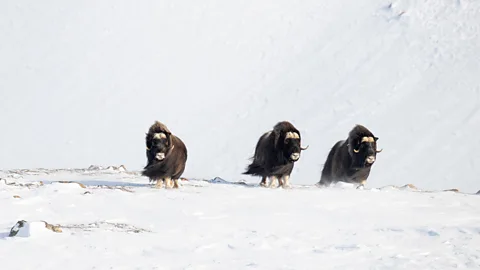 Kevin Corridor
Kevin CorridorPrehistoric beasts
One morning, after consuming toast heated by spearing it with a knife and holding it over a burner, Danielsen pointed up in direction of the mountains because the canine carried us 10km west of Ittoqqortoormiit. We appeared up and noticed 4 musk oxen standing on a distant ridge.
Weighing as much as 400kg, these prehistoric-looking beasts, with quick horns protruding from their cheeks and long-flowing black and tan fur overcoats blowing within the robust wind, had been as photogenic as they had been imposing. We disembarked from the sleds and proceeded with nice warning, as Holko warned us that these Ice Age relics will be skittish and aggressive: transfer too shortly and they’re going to run off; get too shut and they’re going to cost. After an hour of capturing these goliaths, they began climbing greater into the mountain passes, maybe figuring out that they’re thought to be a neighborhood delicacy in Ittoqqortoormiit.
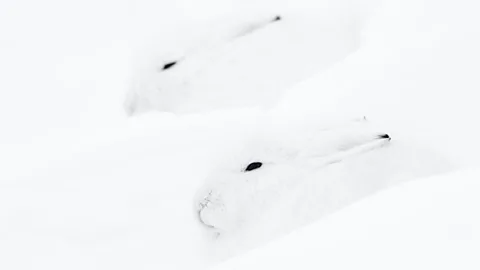 Kevin Corridor
Kevin CorridorThe hunter
On our third day, Danielsen talked about that he owned a hut about 25km away and invited us to spend two nights there. We had been humbled by his kindness – particularly as a result of his house was strategically positioned to identify polar bears on the pack ice. The brightly painted blue hut was simply massive sufficient for a small couch, chair, sink, range and a uncommon sit-down rest room – however essentially the most noticeable function was the big slaughter hook hanging from the ceiling.
It reminded us that while Danielsen might have taken on guiding to complement his earnings, looking is his ardour, his occupation and his ancestral custom. By regulation, hunters right here aren’t allowed to promote meat or skins from their kills – or within the case of musk ox, import them overseas. As an alternative, the meat can solely be used to offer meals and clothes for households – simply because it has for generations.
 Kevin Corridor
Kevin CorridorA household custom
Whereas at his home, we discovered that Danielsen wasn’t only a proud Inuit hunter but additionally a father of 4 youngsters. He defined that his father was a hunter, his grandfather was a hunter and he hoped his youngest son would comply with in his footsteps at some point. Holko had discovered a cranium of a musk ox the day gone by and gave it to Danielsen, who was elated. I requested Danielsen if I may {photograph} him holding the cranium and he fortunately obliged.
Later over dinner, we talked. “Take a look at these pictures,” Danielsen mentioned smiling, as he confirmed me his cell phone. “That is my father, yesterday.” His father was standing over an enormous polar bear mendacity useless on the ice. “And take a look at these,” he mentioned with nice satisfaction, swiping via pictures of three big grownup polar bears that he had killed. As a result of warming temperatures over latest many years, polar bears have been pressured to alter their migration patterns, bringing them nearer to communities like Ittoqqortoormiit and posing actual risks to folks and themselves.
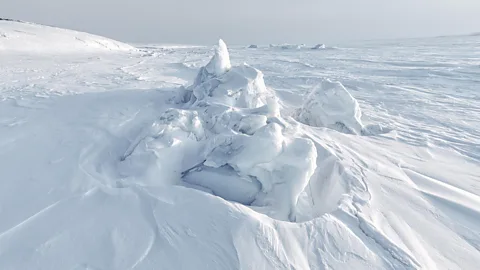 Kevin Corridor
Kevin CorridorNature’s ice sculptures
From Danielsen’s hut, we headed 20km east. As our sleds glided over the snow and ice, I marvelled on the surroundings and serenity that surrounded me.
The sunshine was magical; misty and moody with gentle rays of solar caressing the blue-toned pack ice. We handed towering icebergs and eruptions of compacted ice that nature had sculpted into artworks. This was a panorama photographer’s paradise. Being in full darkness at evening with no gentle air pollution, the Northern Lights repeatedly dance via the skies on clear nights in autumn and winter. Even this phenomenon, identified domestically as arsarnerit (“those that play ball”) has a connection to looking, because the lights are believed to be the souls of kids taking part in with a walrus cranium.
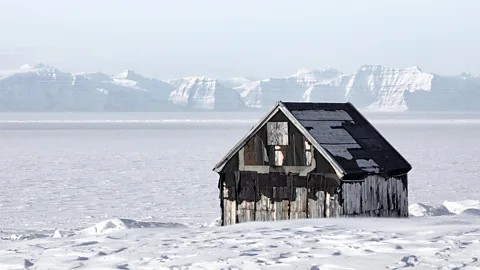 Kevin Corridor
Kevin CorridorThe “ghosts of the Arctic”
After 5 lengthy days of journey, we arrived at Kap Hope, a small settlement of about 20 outdated huts 14km west of Ittoqqortoormiit with views of ice pack for miles. Exhausted and bitterly chilly, the six of us unfurled sleeping baggage in one of many cabins. The next morning, as he peered out of a small window with binoculars, Danielsen immediately shouted, “Polar bear! Polar bear!” and pointed into the gap.
My adrenaline was pumping as I considered photographing the most important land-based carnivore on Earth – an apex predator that may scent its prey 32km away. We made our approach down the aspect of the mountain, fastidiously carrying our cameras and longest lenses in heavy winter gear. The bear, 6km away, remained on the ice for 20 minutes or so earlier than sauntering away. I had dreamed about photographing what Holko describes because the “ghosts of the Arctic” – polar bears whose white fur blends in so completely with its environment that they are barely seen – however this was the closest I might come.
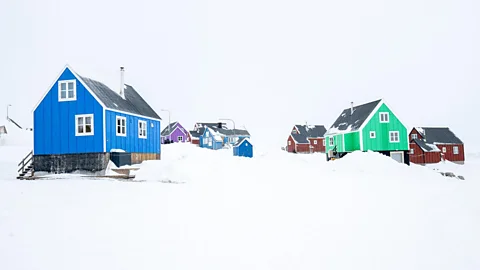 Kevin Corridor
Kevin CorridorIttoqqortoormiit
There is just one guesthouse within the western hemisphere’s most distant group, and it is fittingly named Guesthouse. We had been on account of relaxation right here for the following three days earlier than flying out, and after almost per week within the frozen wilderness, it took a while to get used to Ittoqqortoormiit. Brightly painted homes standing in deep white snow dominated the landscapes. Groups of canine had been chained to empty sleds like an Arctic taxi rank. Snowmobiles zipped round city as folks went about their each day lives.
In recent times, Ittoqqortoormiit has been billing itself as a vacation spot for adventurers – a spot the place you may reduce via the ice on a ship, trek via the tundra, view icebergs and discover part of the world that few folks on the planet will ever see. However as a policeman (one among three, I used to be informed) waved to me as he handed on his snowmobile, I not felt like an adventurer, however a small a part of this far-flung group.
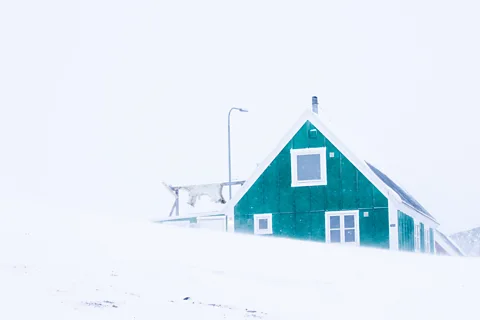 Kevin Corridor
Kevin CorridorLife on the finish of the world
You may stroll throughout Ittoqqortoormiit in about half-hour. It is comprised of a church, a small journey company, a police station, a bar, a guesthouse, a heliport and a small grocery store referred to as Pilersuisoq that is provided by two ship deliveries every season. Wandering the sparsely stocked aisles, I used to be struck by the excessive value of all the things. I puzzled how, in a spot the place there have been few jobs, locals may afford these costs.
Exterior, the polar bear skins hanging on scaffolding close to so many homes jogged my memory of this group’s origins. I might launched into this journey to seize distinctive photographs of wildlife. And whereas the “ghosts of the Arctic” eluded me on this event, it did not matter, as I might gained a far higher appreciation for a way folks managed to dwell in one of many remotest locations on Earth.

